Virtua Fighter 5 Exclusive Hands-On
We throw down with a near-final version of Sega's premiere fighter on the PlayStation 3.
Sega's Virtua Fighter series has remained one of the staples of the 3D fighting genre since it hit arcades in 1993. In the years that have passed, the crudely mo-capped polygons of the original game have evolved into refined, near-photo-realistic fighters that have set the bar for visuals in arcades and home consoles. At the same time, the game's fighting system has also matured from its modest beginnings and seen significant changes over the years.
Though the console conversions of the game had to get creative in re-creating the arcade experience at home, 2002's Virtua Fighter 4 and its follow up, Virtua Fighter 4 Evo, finally saw the series match the visuals of its arcade counterpart. The two PlayStation 2 games saw the bleeding-edge visuals of the arcade come home successfully and even offered new features not seen before. For Virtua Fighter 5, Sega has taken the same approach to bringing the latest installment of the series to the PlayStation 3. We logged in a good chunk of time with a work-in-progress version of the upcoming fighter to see how it fits on Sony's sleek new box.
The game's roster has grown to 17 fighters entering the fifth World Fighting Tournament. Those who have followed the Virtua Fighter series will recognize most of the fighters: Kung Fu teacher Akira Yuki, action star Pai Chan, cook Lau Chan, wrestler Wolf Hawkfield, fisherman Jeffry McWild, ninja Kage Maru, student Sarah Bryant, Indy car racer Jacky Bryant, herbal doctor Shun Di, college student Lion Rafale, college student Aoi Umenokouji, security officer Vanessa Lewis, monk Lei Fei, assassin Goh Hinogami, and ladies man Brad Burns. As with the last few entries in the series, the roster has grown by two, with opera troupe leader, and Pai Chan enthusiast, Eileen and Mexican wrestler El Blaze, who enters the tournament out of jealousy toward Wolf Hawkfield.
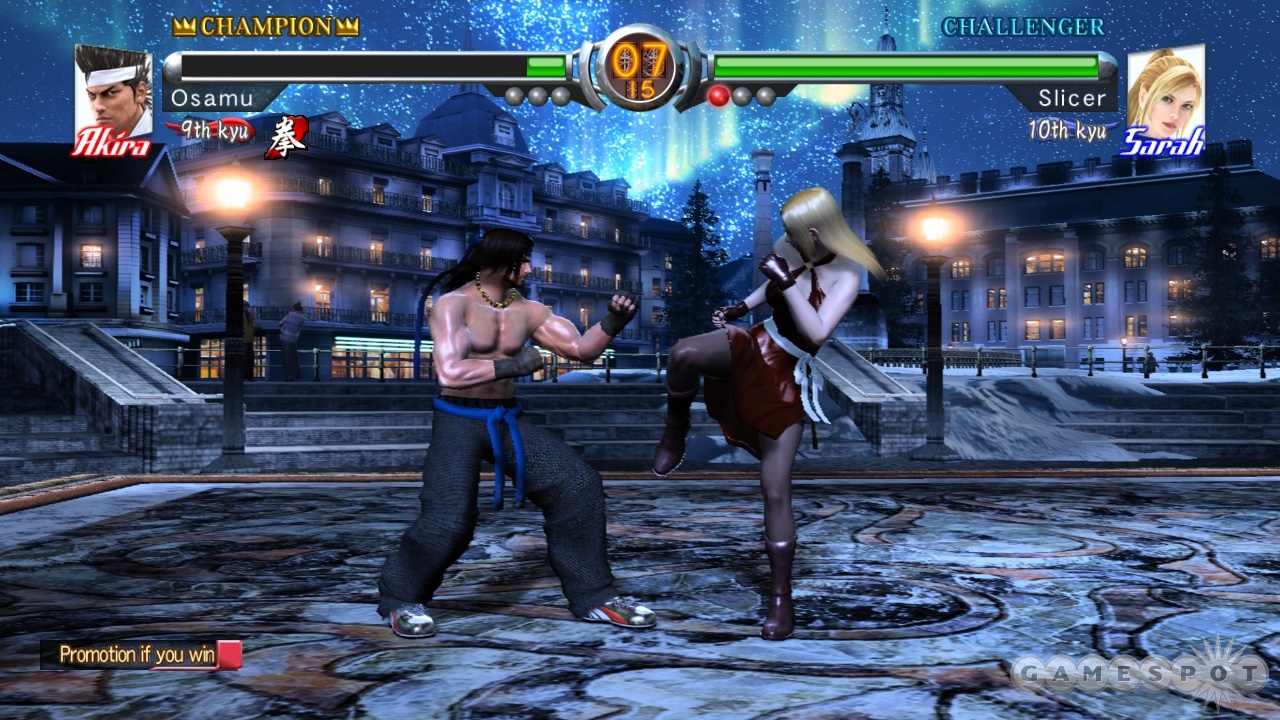
As with the previous games, Virtua Fighter 5 is superficially light on the story, with next to no inkling of the drama behind each character's entrance into the tournament. However, if you have a gander at the game's manual and the brief bios laid out for each character, you'll be able to catch up on what's been going on with your favorite fighters since the last game. At the center of the tournament is a global organization named Judgement 6 (J6 for short), made up of six corporations with a hand in everything from weapons development to international politics. Though it's a little tough to follow, the organization is working on a subtle form of world domination that apparently involves the World Fighting Tournament. We're not entirely sure how that actually works, but it's as good an excuse as any to fight a bunch of people, so we're rolling with it.
It seems J6 is eager to test a new model of its cybernetic fighter--the game's traditional end boss, Dural--who has been loaded up with combat data taken from Vanessa. The evil corporation had designs on making Vanessa a cyborg, but she escaped before she suffered the same fight as Kage Maru's mother, who had been Borg-ified into Dural for the last few games in the series. Sadly, all this backstory continues to be lost from any prominent mention as you play through the game's various modes, requiring you to read about it, which is a shame.
Speaking of modes, Virtua Fighter 5 sticks close to the formula introduced in VF4 and VF4 Evo. You'll find four gameplay modes--arcade, versus, quest, and dojo--as well as a new VF.TV option. At the core of the experience is the save file you'll create for your custom fighter that mimics the magnetic card system that's been in use in Japanese arcades since VF4. The card tracks your play data throughout the game and saves various stats and items. Arcade is an accurate re-creation of the actual arcade experience and pits you against a series of fighters on your way toward a confrontation with Dural. Versus mode is exactly what you'd expect--a fight against a friend. As with the last two entries in the series, you'll be able to use custom characters in addition to the basic roster of fighters, so it's a good place to show off your customized character (more on that in a bit).
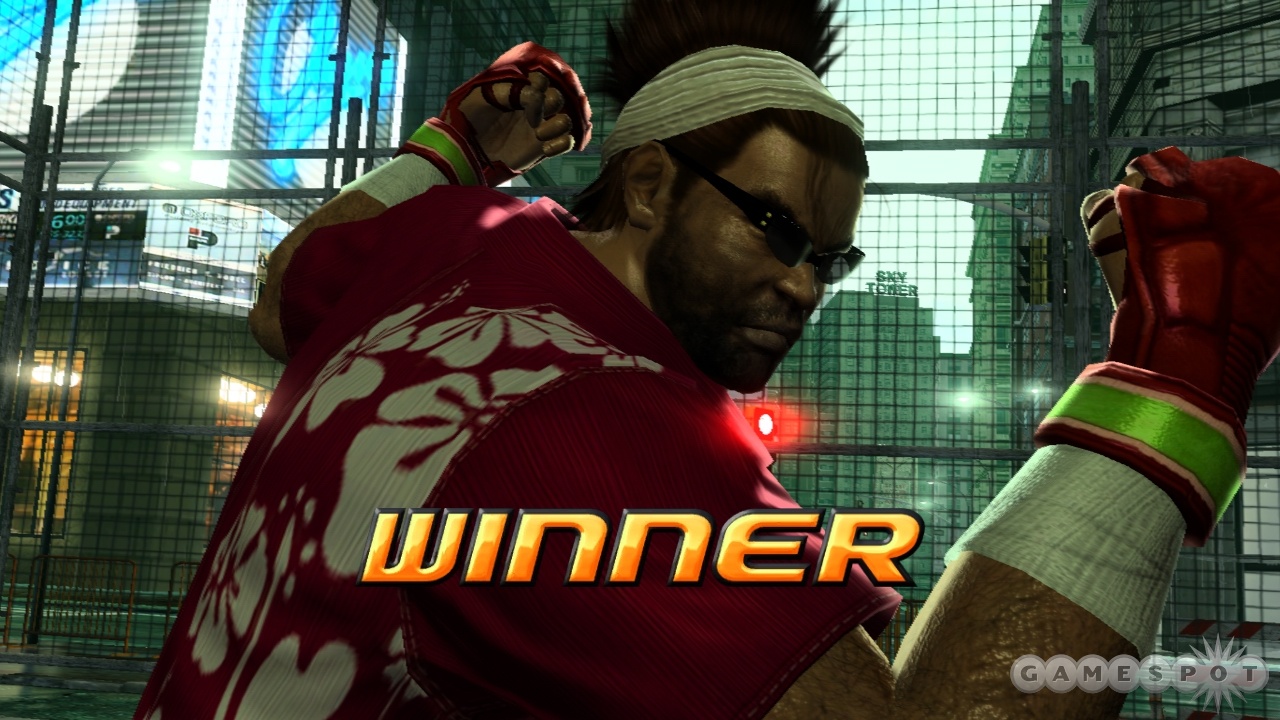
Quest mode is an extension of the Kumite and quest modes introduced in VF4 and VF4 Evo, respectively. The mode is essentially a role-playing game-like experience that lets you travel to different locations and face off against artificial-intelligence opponents of varying skill levels. Success in battle will let you advance your character's rank, earn money you can use to buy items in the game's shop, unlock emblems, and win items ranging from costumes to accessories you can equip on your fighter. As with the previous games in the series, the items and outfits you earn will range from the cool to the outlandish. The level of customization has been bumped up some and lets you give your fighter a radical makeover if you choose to.
The dojo mode offers two types of training for you to try: command and free. Command lets you go through every move in your fighter's repertoire successively. Once you get comfortable with a fighter's moves, you can select a time-attack option to see how fast you can zip through them all. The free option basically lets you practice against an AI opponent whose behavior you can set in minute detail. For hardcore fans looking to hone their skills to razor sharpness, the modes will let you customize your display to show input, frame, and hit data. While all of the above is a great collection of learning tools, the dojo mode is missing one of the smartest features included in the previous games: the ability to watch the computer do a move. Though it was pretty simple, the feature helped novices get a handle on VF's nuanced fighting system. Given the tweaks that the system has undergone in VF5, especially the timing tweaks, the omission of the demo option will likely be missed.
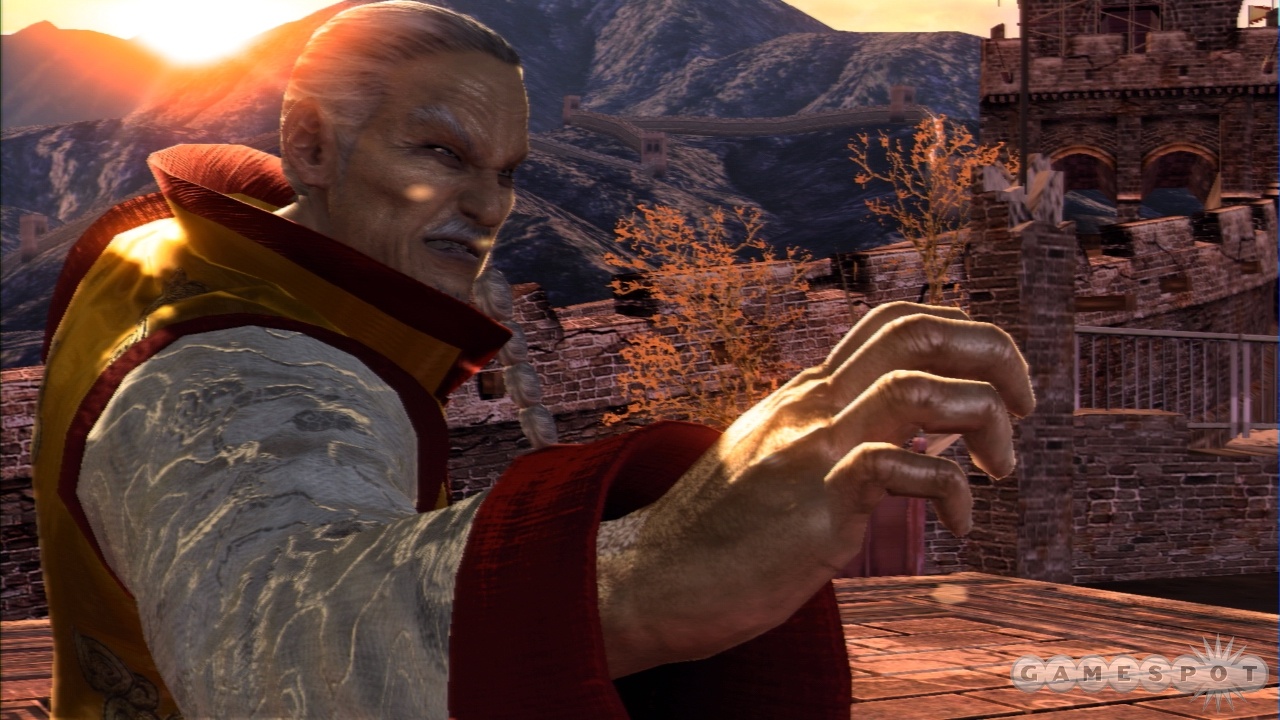
Finally, VF5's VF.TV option will likely be a bit of a letdown to those familiar with the feature from the Japanese arcade version of the game. In Japan, VF.TV was an online feature that taped into Sega's VF.NET online service, which broadcast high-profile matches with blow-by-blow commentary live to arcades. The service also offered programs that gave fighting tips, Virtua Fighter news, and general hints on using arcade terminals. Unfortunately, due to VF5's lack of online support of any kind on the PlayStation 3, the mode merely offers you the opportunity to watch replays you'll save of your matches, exhibition matches you can set up between any of the game's characters, and a handful of movies and demos that were used to promote the arcade game. Besides the proper gameplay modes, you'll also find a customization mode that lets you fine-tune your character's look. Virtua Fighter 5's control is as tight as ever and works well with the tweaks to the fighting system. The system again relies on a simple three-button layout--punch, kick, and block. As with the PS2 game, different dual-button combinations--such as punch and kick; punch and guard; and punch, kick, and guard--are mapped to the shoulder buttons to make pulling off counters and some of the more intricate moves a little easier. The default layout feels right, though you'll find several options to customize it to your liking, ranging from different configurations to the ability to customize the action of every button. Though the Sixaxis is perfectly fine, purists will likely be using the arcade sticks that are set to hit Japanese retail early February, in time with the game's Japanese release, which are begging to be imported.
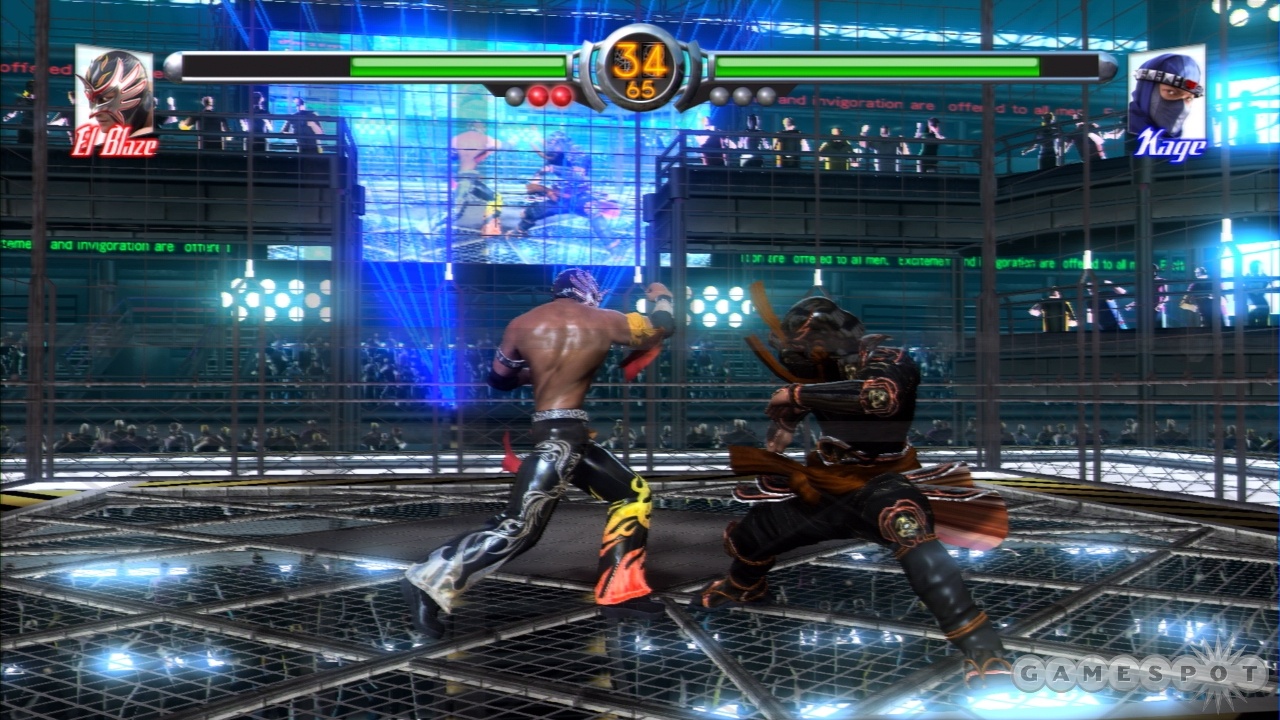
As for the specifics of VF5's fighting system, the game doesn't sport the dramatic leap the series made from VF2 to VF3 or VF3 to VF4. Instead, the game is more a refinement of the VF4 system that offers a variety of tweaks, both big and small. Fans will notice that moves have been added and tweaked to all the returning fighters, timing is slightly different across the board, and damage has been adjusted. The most noticeable new element to the game is the emphasis on faster, more aggressive fighting. The system isn't too far off from VF4 to make it impossible for people to pick up, but there will definitely be a learning curve for players as they adjust to the tweaks done to their fighters. A dynamic element to the experience is the 16 arenas you'll duke it out in. This time out you'll find a significant variety that will definitely affect your game. The game features a mix of walled, open, small, and large arenas that will require you to change your tactics accordingly. For example, in small, confined arenas like Wolf's stage, you had best be ready to block and evade in close quarters, keeping an eye out for a good time to throw. On the other hand, the larger, open arenas give you room to breathe but also pose the danger of a ring out if you're not careful.
The action in the game will play out in gorgeous fashion, thanks to stunning visuals that move smoothly and match the impressive arcade game nearly perfectly. Though the arcade version of VF5 runs on Sega's Lindbergh arcade hardware, the arcade board's similarity to the PlayStation 3 has allowed developer AM2 to replicate the experience nearly flawlessly. The fighters look stunning and continue to evolve toward a more realistic look that still maintains a unique style. Skin, lighting, and cloth are all nicely done and feature distinct variations on every fighter, giving them all character. Whether it's Akira's weather-beaten skin, Lau's stern wrinkles, Shun Di's dehydrated leathery pallor, or Sarah's luminescent complexion, all the fighters look great.
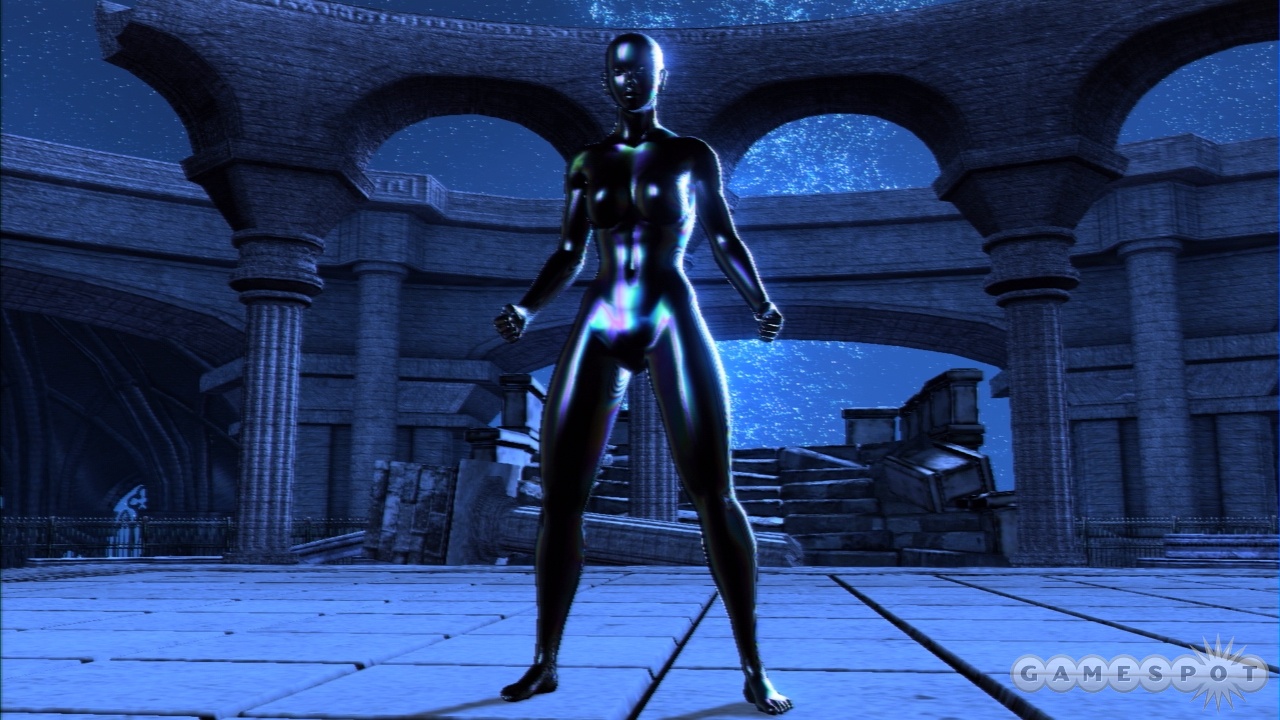
Better still is the more defined sense of scale that goes along with this higher level of detail. Newcomer Eileen is petite and lithe, whereas Jeffry is a mountain of dreadlocks and bulging muscle and towers over nearly every fighter. Dural serves, as she has for the last few games, as the showcase for graphical hotness. This time out, her metallic form is curvier, shinier, and features showy gradients of color. Animation in the game is extremely fluid and makes fights between players at higher levels graceful and painful dances that are fun to just watch.
Though the fighters set the bar high in the game, VF5's arenas are hardly slouches. The varied collection of battlegrounds covers a wide range of territory that includes a claustrophobic cage out on a snowy mountain, a water-soaked cityscape, a misty temple high in the mountains, a cherry-blossom-laden garden, a sandy beach, and a wrestling ring surrounded by a cheering crowd, to name just a few. Each stage features a high level of detail and a varying amount of ambient activity, depending on the setting. In addition, you'll notice assorted lighting and other effects on hand to help sell the locales, such as the light bloom from the sun cutting through the mist around the mountain temple and the flashy light show of the aforementioned wrestling ring. The only blemishes on the game's sheen we've seen so far are the odd texture here and there and the occasionally noticeable loads. If we get nitpicky, we'll wring our hands and bemoan the fact that the game doesn't support 1080p. Other than those odds and ends, the game looks fantastic and is the closest the series has come to matching its arcade counterpart polygon for polygon.
The audio matches the arcade's sound perfectly. You'll hear all the fighters in full voice, as well as the pleasing array of punches, kicks, slams, and assorted effects for counters, sweeps, and the like. The game's soundtrack is the standard mix of genres--heavy on the rock--and provides good accompaniment to the action. A new wrinkle (that's awesome in the old-school "Sega!" kind of way) is commentary during fights, which you can toggle. Though the announcer commentary doesn't always synch up with the action due to the speed of battles, it still makes for some awesome moments thanks to the slightly off-kilter inflection.
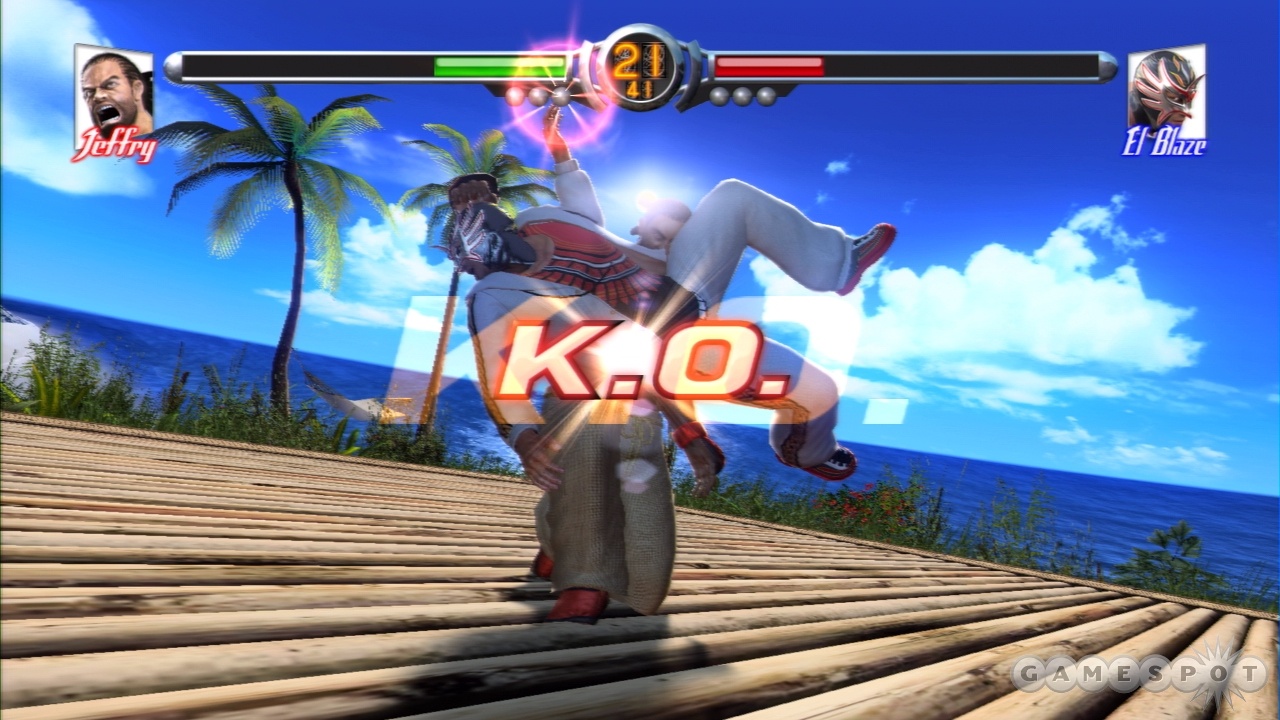
Based on what we've played, Virtua Fighter 5 is shaping up to be a pitch-perfect re-creation of the arcade game that's been fleshed out with a fair amount of extras. The game plays great on the PlayStation 3 and is gorgeous to look at, especially running at 720p through HDMI. The only issues we have right now are the somewhat by-the-numbers array of extras and the lack of online support. While AM2's misgivings about taking the franchise online are well documented, there are a number of ways that online support could have been worked in via online leaderboards or downloadable ghost data. Still, you'll be hard pressed to find a more stunning game for the PS3 or a better fighter. If you're a fan of fighters, you should most definitely look out for Virtua Fighter 5 when it ships next month for the PlayStation 3. In the meantime, we've still got our version of the game handy, so if you have any specific questions, feel free to hit us up in the Virtua Fighter 5 forum, and we'll do our best to answer them.
Got a news tip or want to contact us directly? Email news@gamespot.com
Join the conversation